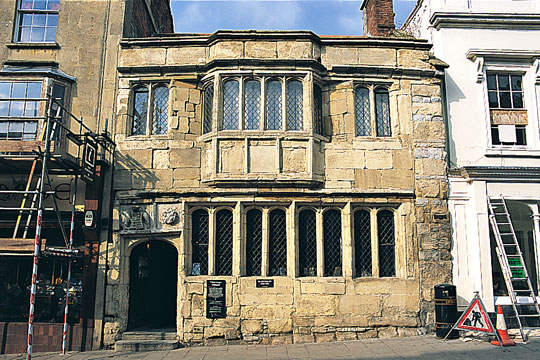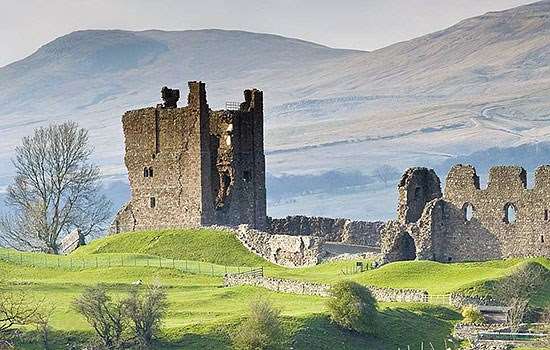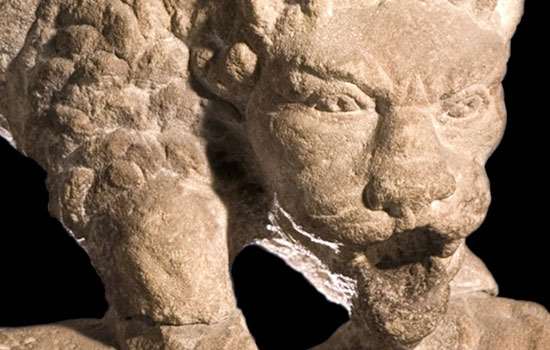History of Glastonbury Tribunal
This fine late 15th-century town house, once thought to have been the courtroom of Glastonbury Abbey, now houses both the Tourist Information Centre and the Glastonbury Lake Village Exhibition, which contains dramatic finds from one of Europe's most famous archaeological sites.

Approaching Glastonbury today, it is hard to imagine the town dominated by the great abbey church, once as large as a cathedral; Glastonbury Abbey was one of the oldest and richest monastic communities in England.
The house now known as Glastonbury Tribunal owes its name to the fact that it was formerly mistakenly identified with the abbey's tribunals, where secular justice was administered in association with the management of the abbey's estates. However, it is possible that the house was used by one of the abbey's officials.
Description
The building is a typical late medieval house, with a separate kitchen block at the rear. A passage leads from the front door through to the courtyard at the back. The present façade with its projecting first-floor bay was added in the early 16th century: the construction joints are clearly visible in the masonry. The Tudor rose and the badge of Abbot Beer (died 1524) have been reset over the entrance to the passage.
Within the house, several internal partitions were added when the building was let to different tenants later in its history. The ground-floor front room retains its arched fireplace with recesses on either side, and below the window the wooden panels, carved to imitate linen folds, date from the 16th century. Scars on the wall show the location of the medieval stairs, and corbels or supports mark the position of an upper floor.
The room at the back was the main chamber and has a fine panelled ceiling; the four-light window in the north wall is original, while those in the east and west walls were inserted in the 17th century. The kitchen block at the back of the house is a separate building added in Elizabethan times.
The first floor, which now houses the Lake Village Museum, repeats the arrangement of the ground floor. The main room at the front extends over the entrance passage and retains its fine original open roof.
Glastonbury Lake Village Museum
Two thousand years ago much of Somerset's landscape was covered by marshy sea, and settlers were drawn to the island refuge provided by Glastonbury's famous tor. Although the marshes have long since been drained, the peaty soil acts as a good preservative.
In 1892 an amateur archaeologist discovered a number of earth mounds near the road between Glastonbury and Godney, just to the north. These proved to be the remains of an Iron Age village built on an artificial platform around 1.4 hectares (3.5 acres) in extent, reached by dug-out canoe and by a network of wooden trackways laid across the marshland.
Hundreds of artefacts were recovered from the site, including many items made of wood, iron and bronze. The Glastonbury Lake Village Museum, on the upper floor of Glastonbury Tribunal, displays some of the finds which illustrate the domestic, craft and industrial activities of the occupants.
Further Reading
Rahtz, P, Glastonbury (London, 1993)
Ralegh Radford, CA, Glastonbury Tribunal (London, English Heritage, 1977)


